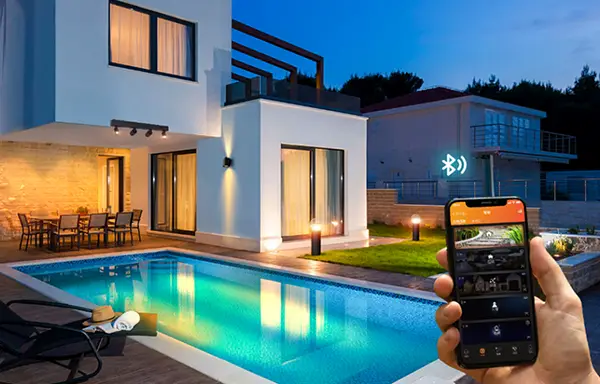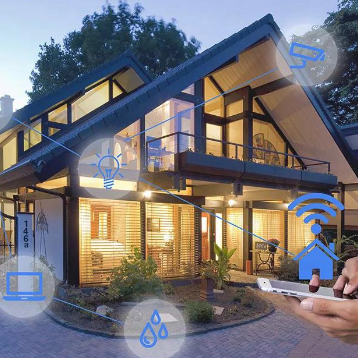Key Points:
Driven by the dual trends of smart homes and the rise of public health awareness, modern lighting is undergoing a profound transformation from "illuminating spaces" to "defining environments." Consumers desire a seamless, connected smart experience while pursuing a worry-free, healthy lighting environment, while simultaneously prioritizing energy conservation and environmental protection as uncompromising priorities. This seemingly contradictory "impossible triangle" is forcing the entire lighting industry to undergo a quiet yet intense technological breakthrough and value reconstruction. Finding a delicate balance between these three priorities not only impacts the direction of industry upgrades but also profoundly impacts the quality of light used and ecological responsibility for hundreds of millions of households.
Part One: Awakening Demand – From "Visible" to "Healthy and Worry-Free"
With the widespread adoption of smart lighting, basic user experiences have become a competitive landscape.
Smart dimming, voice interaction, app-based remote control, scene-based interaction… These once-impressive features are now rapidly entering mainstream product lines. According to the latest report from renowned market research firm IDC, China's smart lighting device shipments are projected to grow by over 35% year-on-year in 2024, with household penetration exceeding 28%. However, as basic intelligence becomes standard, consumers' focus is shifting to more sophisticated requirements.

Healthy Lighting Environment: From Hidden Needs to Overt Necessities
"Five years ago, customers asked, 'Is it bright enough?' Three years ago, they asked, 'Can it be connected to the internet?' Now, they ask, 'Are there any blue light hazards?' 'What's the flicker?' 'What's the color rendering index?'" Manager Zhang, who has been involved in lighting retail for 15 years, admits that health attributes are becoming a core purchasing driver.
This shift is driven by the widespread adoption of scientific knowledge: Medical research continues to reveal potential links between low-quality light sources and visual fatigue, sleep disorders, and even the development of myopia in adolescents. When choosing eye-protective desk lamps for their children, parents are no longer satisfied with "AA" labels; instead, they delve into professional parameters such as spectral continuity, R9 value (red light color rendering index), and dynamic color temperature adjustment accuracy. In aging-friendly renovations, bedroom lighting for older adults must also provide both morning wake-up and low-distraction modes at night. Energy Saving and Environmental Protection: From Cost Considerations to Value Identification
With the "dual carbon" goals firmly rooted in consumers' minds,
consumers are actively calculating their long-term electricity bills when purchasing lighting. LEDs, thanks to their high luminous efficacy (typically >100 lm/W), have captured over 90% of the market share, but their energy-saving potential is far from being fully tapped. Data from the National Development and Reform Commission's Energy Research Institute for 2025 indicates that lighting accounts for approximately 13% of total residential electricity consumption. The "hidden energy consumption" of smart lighting—particularly standby power consumption—is becoming a new energy-saving challenge.
Part Two: Technological Breakthroughs—The Key Battleground for Breaking the "Impossible Triangle"
Battleground One: Healthy Light Sources—Going Beyond "Hazard-Free" to Pursue "Biofriendly"
Spectral Revolution: Traditional LED spectra exhibit sharp peaks in the blue light range and insufficient red light. Leading companies such as NVC, OPPLE, and Yeelight are investing heavily in full-spectrum LEDs and sunlight-like simulation technologies. Through special phosphor combinations or RGBW multi-color blending, they achieve a more continuous, richer spectrum, significantly improving the color rendering index (Ra>95, R9>80), restoring the true colors of objects and reducing visual stress.
Cyclic Lighting: The color temperature and brightness of a light source are not fixed. Dynamic spectrum technology has become a new benchmark for high-end products: high color temperature (5000K-6500K) and high illumination in the early morning simulate morning light to boost energy; in the evening, it automatically transitions to warm yellow light (2700K-3000K) to suppress melatonin secretion and promote sleep. Smart ceiling lights within the Huawei HarmonyOS ecosystem can automatically adjust to local sunrise and sunset times and integrate sleep data from wristbands.
Precise Light Control: A healthy light environment requires coordinated optical design. A microprismatic diffuser, multiple anti-glare features, and a scientific light distribution curve ensure uniform and soft light, eliminating direct glare. BenQ's WiT desk lamp's patented meniscus light pattern evenly illuminates a 1.5-meter desk surface, with a difference in illumination of less than 15% between the edge and center.

Battlefield Two: Deepening Energy Saving—From "Efficient Luminous Emissions" to "System Intelligence"
Tackling Ultra-Low Standby Power Consumption: The "always-on" nature of smart lighting creates a pain point in standby power consumption. Industry-leading companies are addressing this issue through customized ultra-low-power WiFi/BLE chips, deep sleep wake-up technology, and energy harvesting (e.g., solar/kinetic energy) standby solutions. For example, Lumi Lianchuang's latest smart switch reduces standby power consumption to an astonishing 0.1 watt, consuming less than 1 kWh per year.
Scenario-Based Intelligent Energy Saving: Moving beyond simple sensor switches to proactive energy saving through "prediction-learning-optimization."
Millimeter-wave radar technology: Detects subtle movements more accurately than infrared, distinguishing between people and pets to avoid false triggers. It also determines a person's activity status (sitting still, walking), automatically dimming the brightness in unoccupied areas.
Ambient light adaptation: Monitors natural light intensity in real time and dynamically adjusts artificial lighting output to maintain a constant, comfortable illumination level.
Big data learning: For example, the Tuya Smart Platform can analyze family routines to pre-heat or turn off non-essential lights.
Boosted driver efficiency: As the "heart" of the system, every 1% increase in driver efficiency significantly reduces system energy consumption. Third-generation GaN (gallium nitride) semiconductor technology is used in high-end drivers, achieving efficiencies exceeding 95%, resulting in a smaller size, lower heat generation, and longer lifespan.
Battleground Three: Intelligent Evolution - Seamless Interaction, Empowering Health and Energy Saving
Platform Integration and Seamless Connectivity: Lighting is no longer isolated, but integrated into the entire smart home ecosystem. Through the Matter protocol, lighting from different brands can seamlessly integrate with mainstream platforms such as Apple HomeKit, Xiaomi Mijia, and Huawei HarmonyOS, enabling cross-device collaboration (e.g., turning on lights when a door is opened, automatic dimming in movie mode).
Health Data Closing Loop: Cutting-edge products are exploring integration with wearable devices. For example, the Philips Hue system can interact with the Apple Health app, slowly lighting up in a specific pattern in the morning based on the user's sleep stage data, for a more natural wake-up.
AI Personalized Light Recipes: Some laboratory products have explored using cameras or sensors to identify the user's state (reading, resting, gathering), and based on environmental parameters, automatically generate and recommend optimal lighting settings.
Part Three: Consumer Myths and Market Challenges - Clearing the Myths and Making Rational Choices
Myth 1: Does "Eye-Protecting Lamps" Equal Absolute Safety?
The Harsh Reality: Currently, there are no mandatory unified standards for "eye-protecting lamps" in China. Market promotions are mixed. "Flicker-Free" may simply mean imperceptible high frequencies, and "Low Blue Light" may come at the expense of color rendering and luminous efficiency.
Clearing the Clouds:
Look for Hard-Core Certifications: CCC is the baseline for safety, while photobiological safety certification (IEC/EN 62471, ensuring an RG0 exemption for blue light hazards) provides health assurance. International certifications such as Germany's TÜV Rheinland Eye Comfort are more valuable references.
Dig Deeper into Key Parameters: A color rendering index of Ra>90 is the foundation, while R9>50 (red light color rendering) is crucial for faithfully reproducing skin tones and food. No visible flicker requires a professional instrument report. Adjustable color temperature range (e.g., 2700K-5000K) and accuracy are practical indicators.
Beware of "pseudo-full spectrum": Check the spectrum graph to see if there are still excessive peaks in the blue light region and whether the red light region is full and continuous.
Myth 2: Intelligence equals high energy consumption?
A dialectical approach: Smart functions themselves (such as networking, sensing, and computing) consume additional energy, but excellent smart control can significantly offset or even exceed this energy consumption through precise on-demand lighting and automated energy-saving strategies.

Smart Choices:
Check standby power consumption: Prioritize products clearly marked as having a standby power consumption of less than 0.5W, ideally less than 0.3W.
Pay attention to energy-saving modes: Are there one-click optimization settings such as "Away Energy Saving Mode" and "Deep Sleep Mode"?
Choose an efficient communication protocol: Zigbee and Bluetooth Mesh generally have lower standby power consumption than WiFi.
Challenges: Lagging standards and needing stronger regulation.
Healthy lighting evaluations encompass complex dimensions (visual, non-visual biological effects, and psychological perceptions), and existing standards struggle to fully cover them, leading to inconsistent market promotional standards.
There's no standardized evaluation method for "system energy consumption" of smart lamps, and there are no mandatory limits for standby power consumption.
Some companies are over-marketing "healthy" concepts, urgently requiring stricter advertising regulation and industry self-regulation.
Part IV: Industry Collaboration and the Light of the Future - Building a Healthy, Green, and Smart New Lighting Ecosystem
Corporate Actions: Multi-dimensional Innovation to Respond to Comprehensive Needs
R&D Investment Shift: Leading companies have significantly increased the proportion of healthy light efficiency and energy-saving technologies in their R&D spending. Upstream chip manufacturers such as San'an Optoelectronics and MLS are accelerating the development of full-spectrum, high-efficiency LEDs.
Deepening Cross-industry Integration: Lighting companies are collaborating with medical research institutions (such as the Aier Eye Research Institute) and university optical research teams to explore the underlying mechanisms and applications of light and health. IoT giants (Huawei and Tuya) are providing underlying intelligent platforms to empower traditional lighting companies.
Transparent Communication: For example, Yeelight publicly discloses detailed spectrum graphs and key parameter measurement reports on its product details to enhance consumer trust. Policies and Standards: Leading High-Quality Development
Relevant national departments are accelerating the development and revision of standards such as the "Healthy Lighting Evaluation Specifications" and the "Smart Lighting System Energy-Saving Evaluation Guidelines" to provide clear guidance for the industry.
Some regions have incorporated ultra-low standby power consumption requirements into green building or smart home product procurement standards.
Future Vision: Unnoticeable, Adaptive, and Humanistic
Light Environment AI Butler: Completely invisible lamps, based on multi-sensor fusion and AI algorithms, autonomously perceive the environment and understand user needs, dynamically creating the most appropriate light atmosphere (brightness, color temperature, and direction) while optimizing energy consumption.
Deeply Integrating Light and Health: Personalized "light prescriptions" are used to improve sleep quality, enhance work and study concentration, assist with mood regulation, and even manage specific chronic diseases.
Exploring Negative Carbon Lighting: Combining renewable energy (such as micro-photovoltaic panels integrated into lamps), more efficient luminescent materials (such as Micro LED and quantum dot QLED), and recyclable material design, we are moving towards a "negative carbon footprint."
Conclusion: The Art of Balance and the Responsibility of Taking on Responsibility
For smart lamps, "energy saving" and "healthy light environment" are not simply choices. This is a comprehensive challenge requiring technological innovation, standardization, consumer rationality, and corporate responsibility. Every consumer's choice of high-color rendering index lamps, every company's persistent pursuit of 0.1 watt standby power consumption, and the implementation of ever stricter standards are driving the lighting environment towards a more comfortable, healthier, and more sustainable future.
The ultimate question: Should the ultimate mission of smart lighting be to weave a tapestry of light that best suits our physical and mental needs, without our awareness, and at the lowest ecological cost? The answer lies in every light and every choice.



